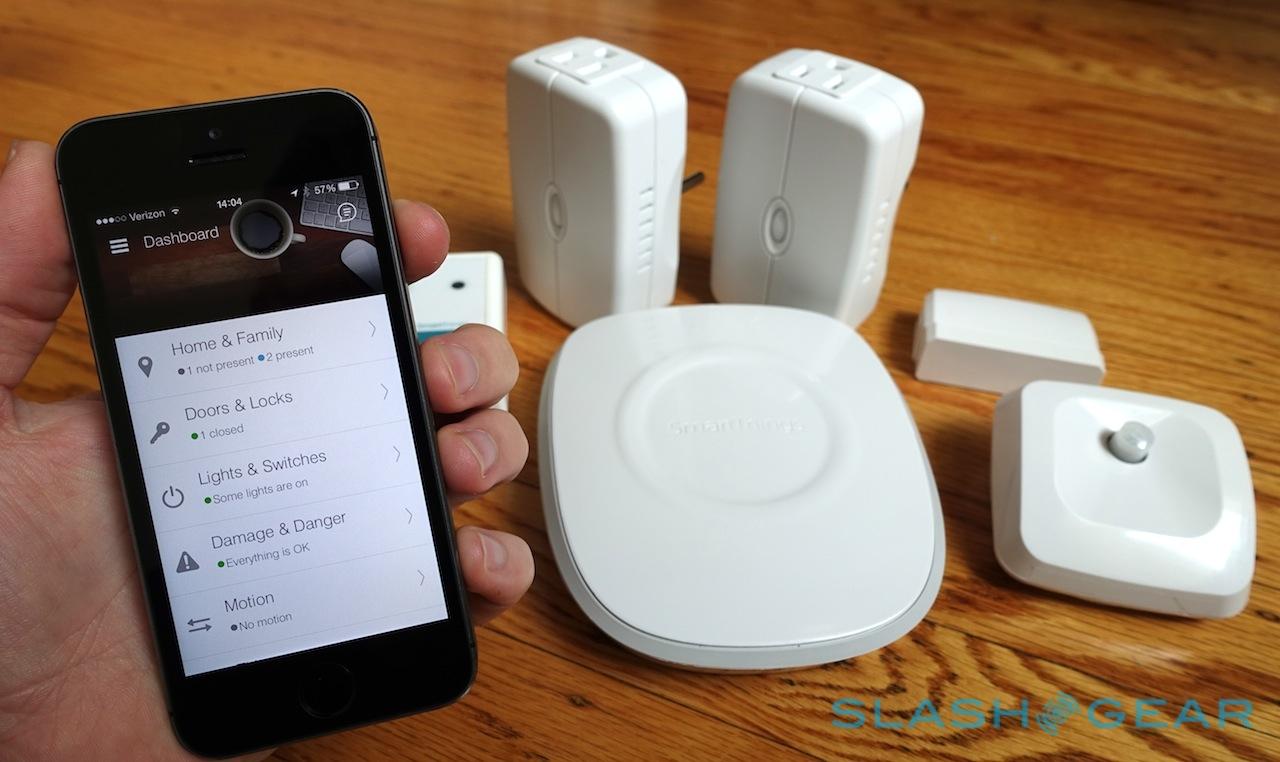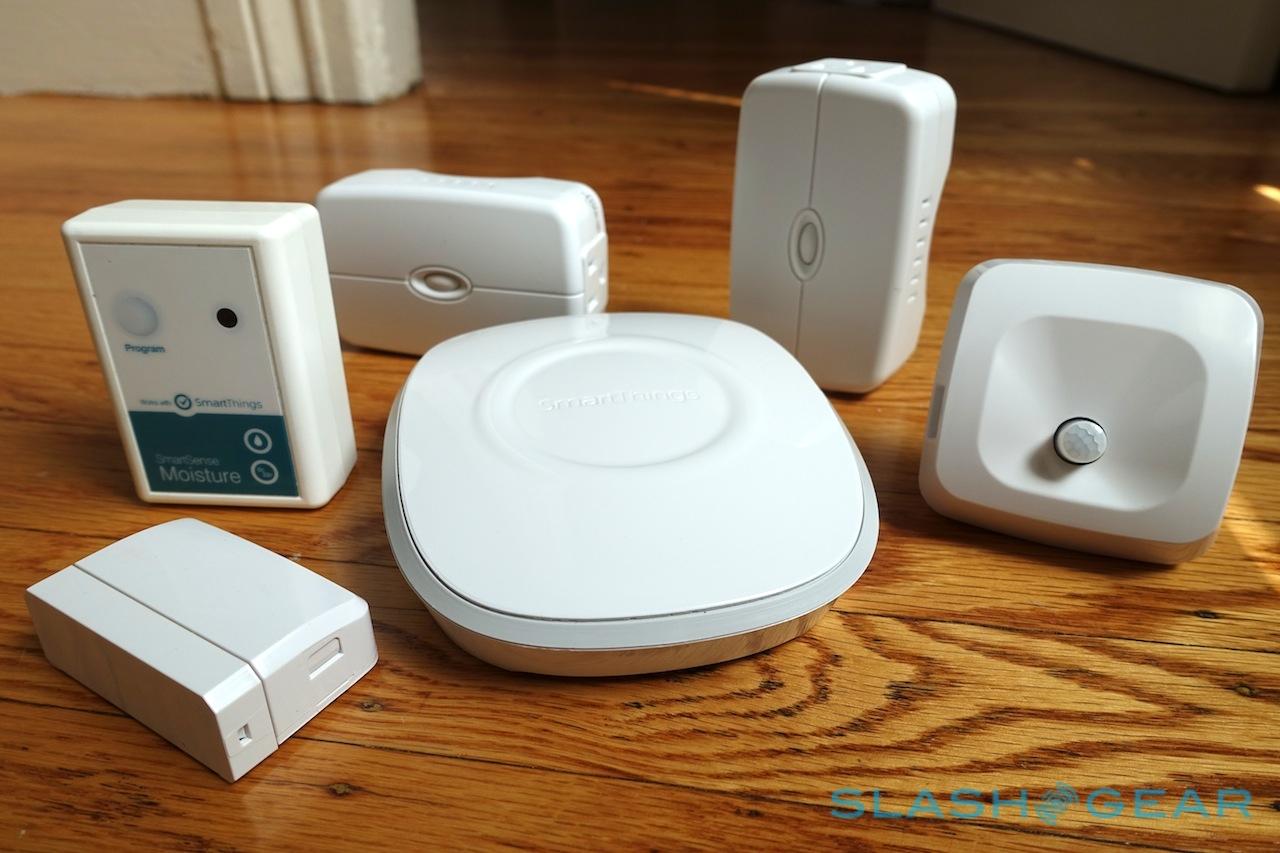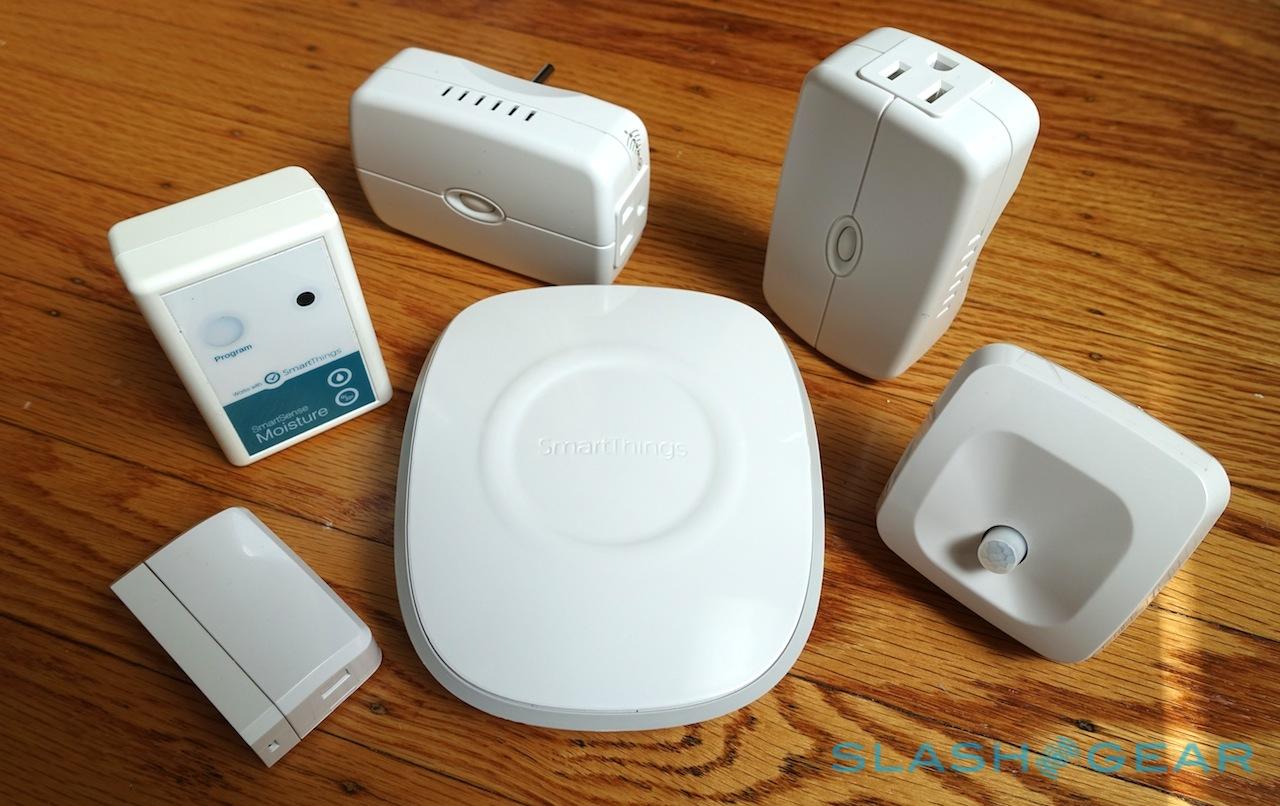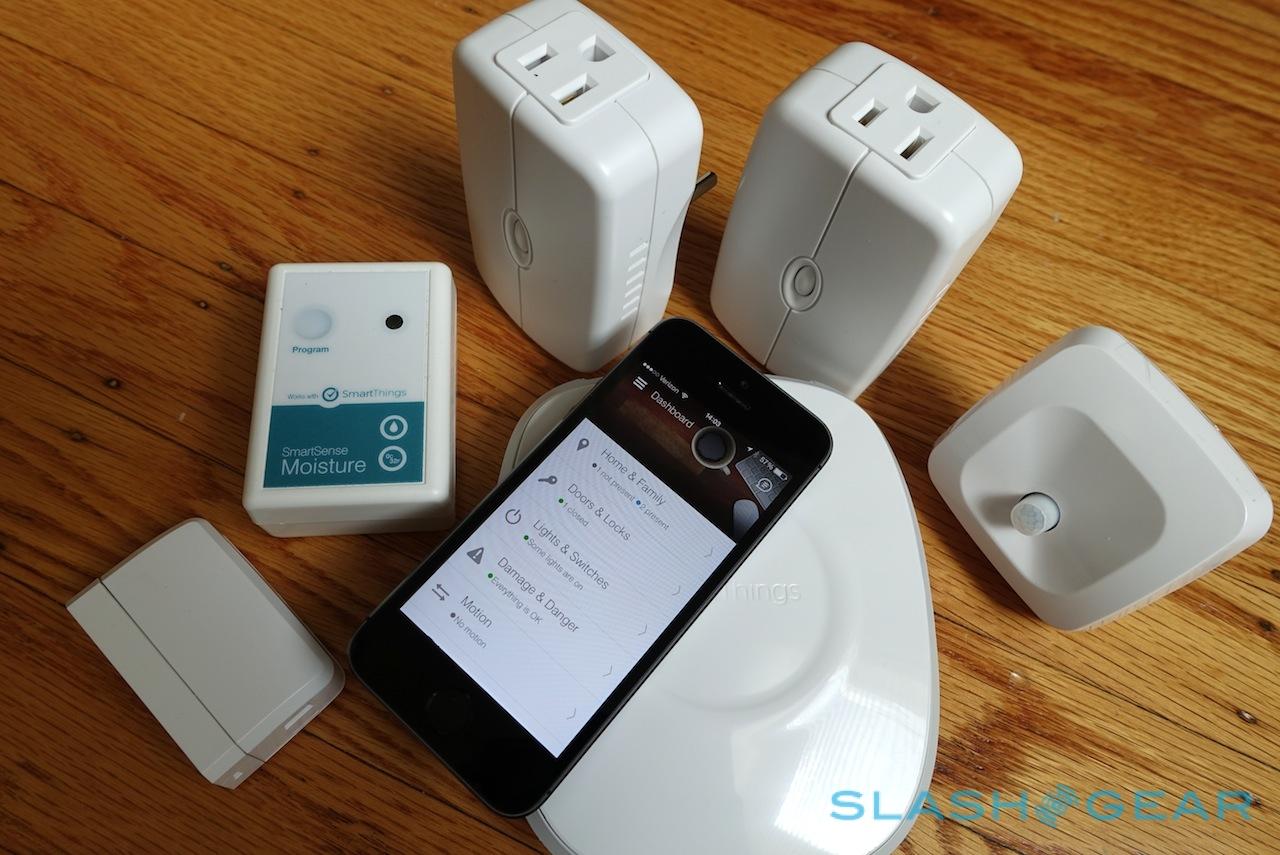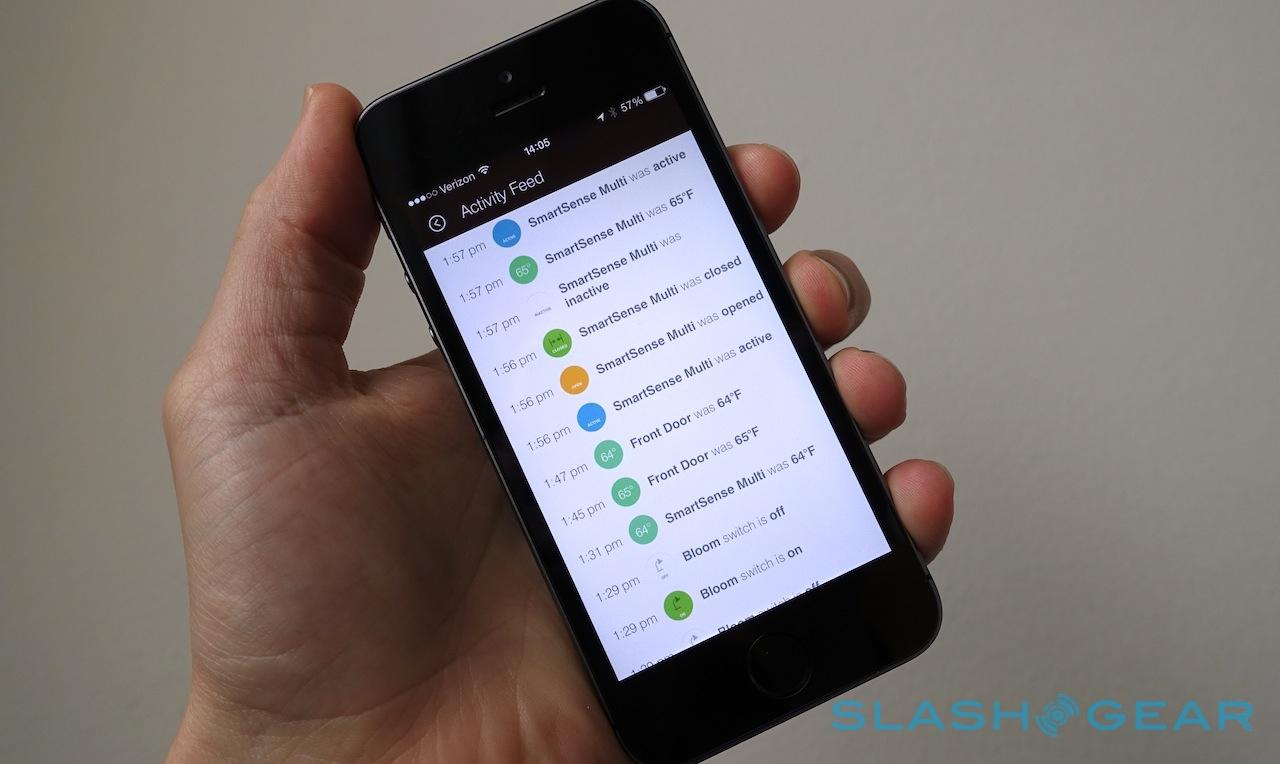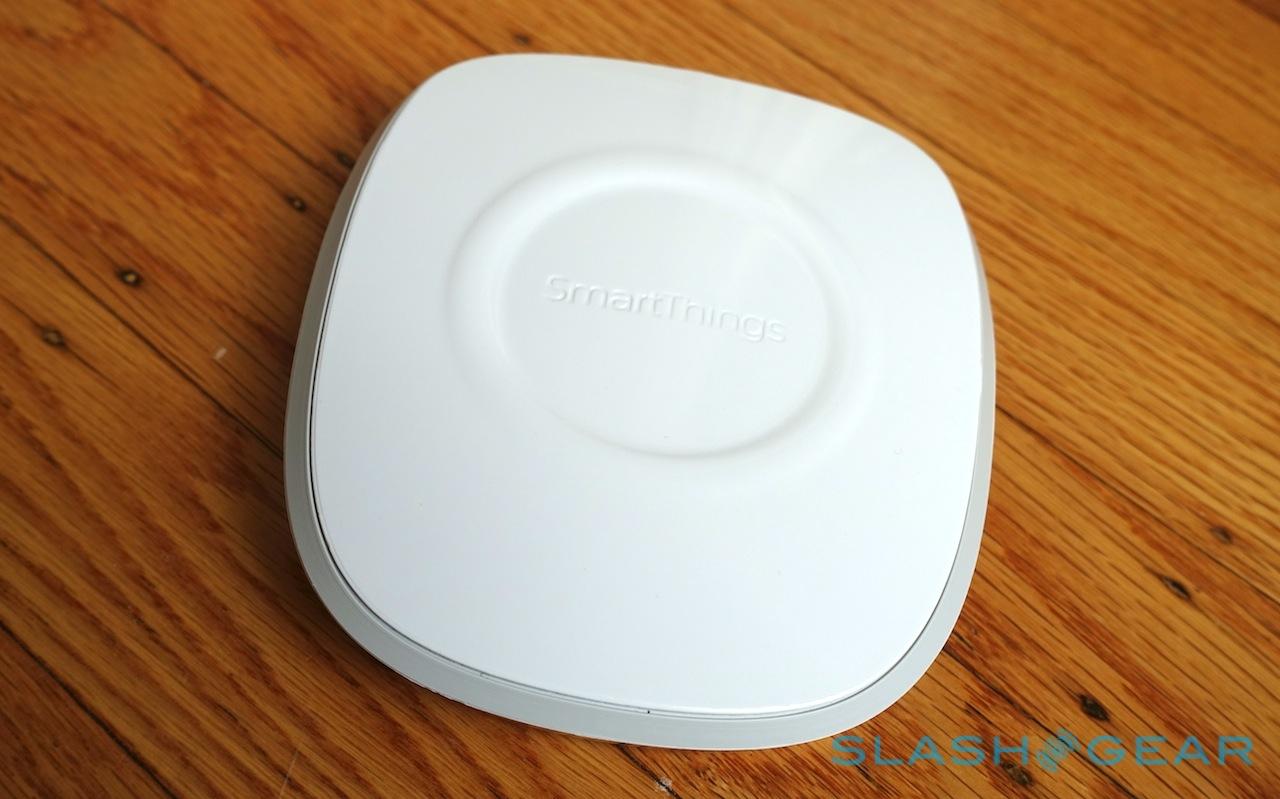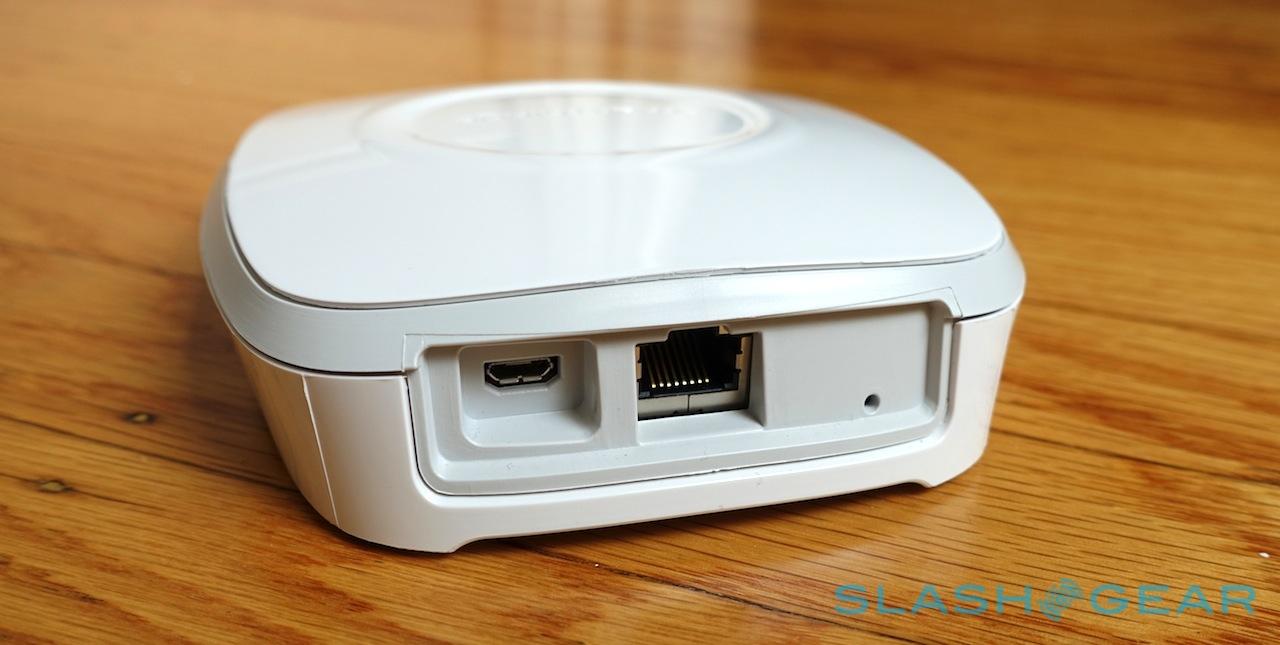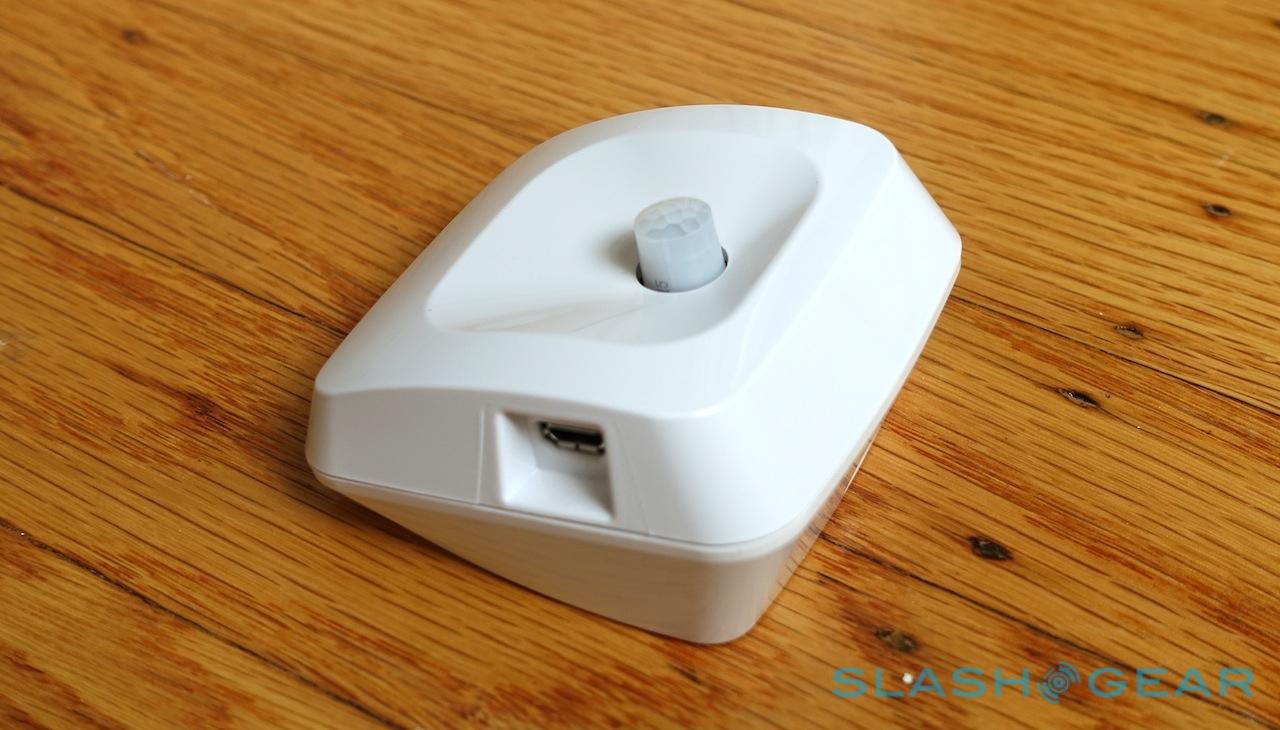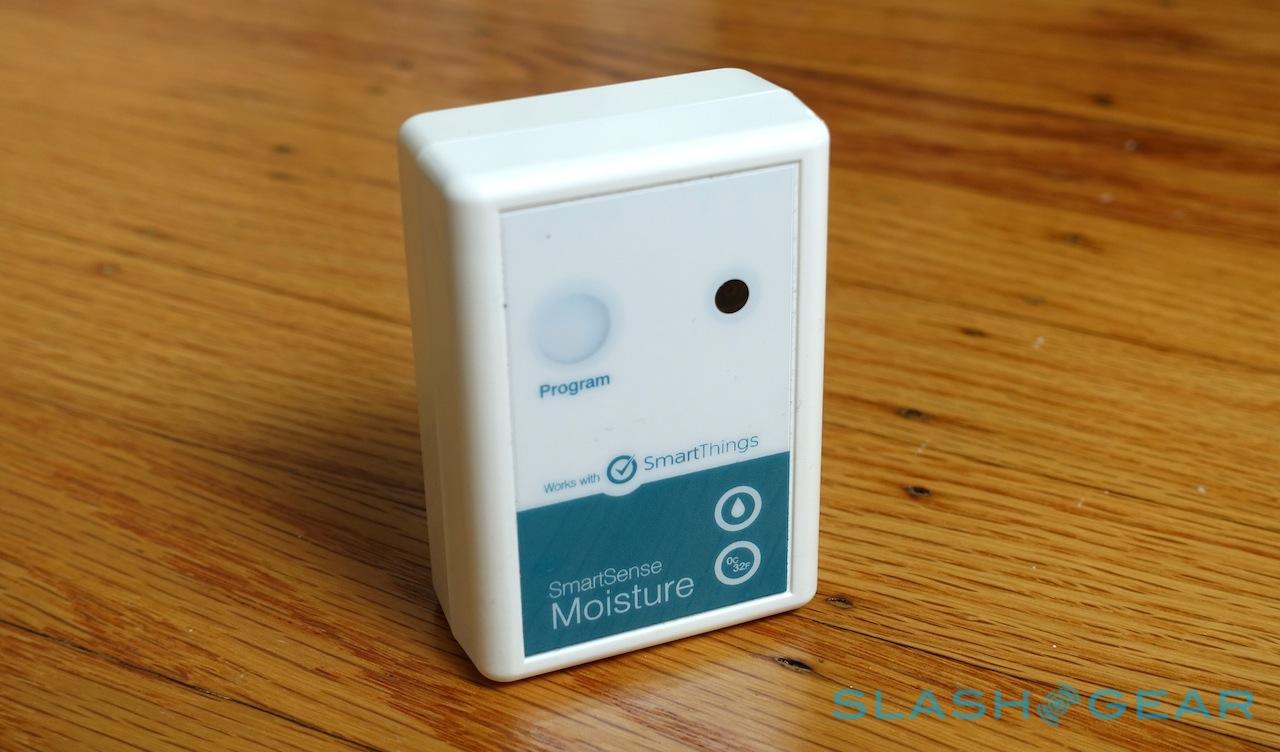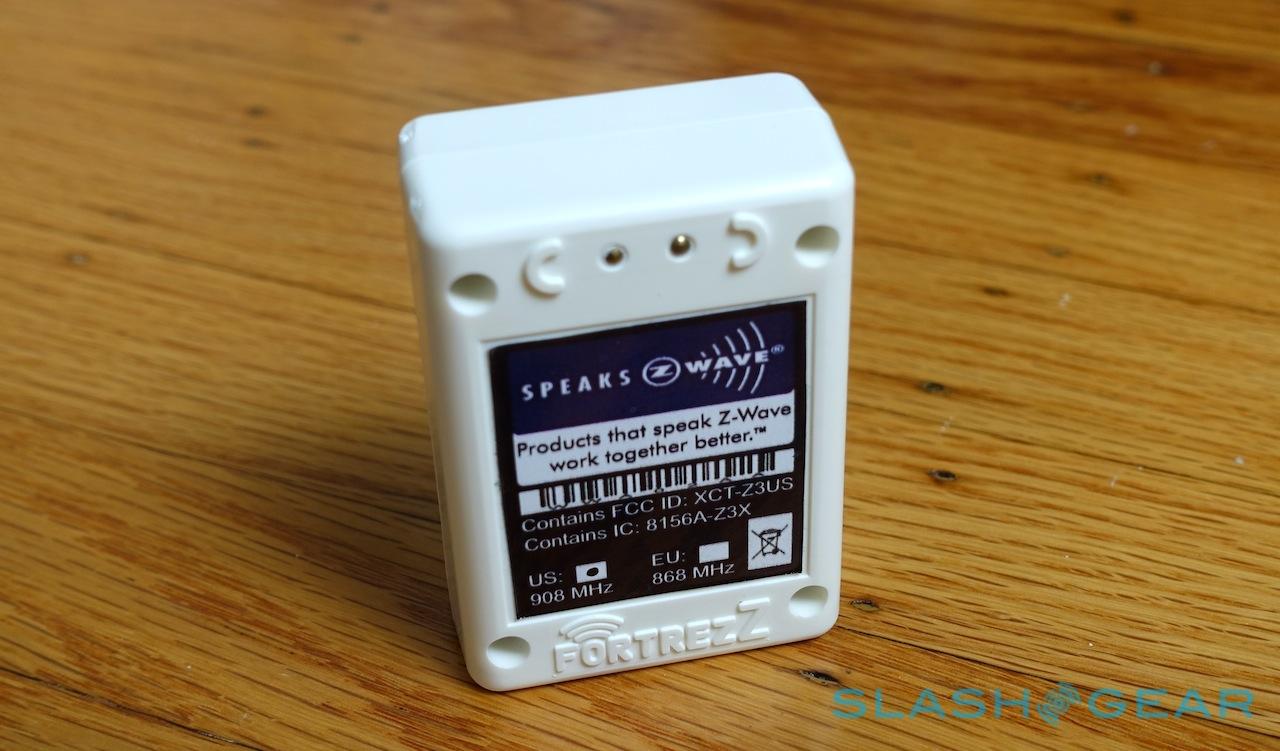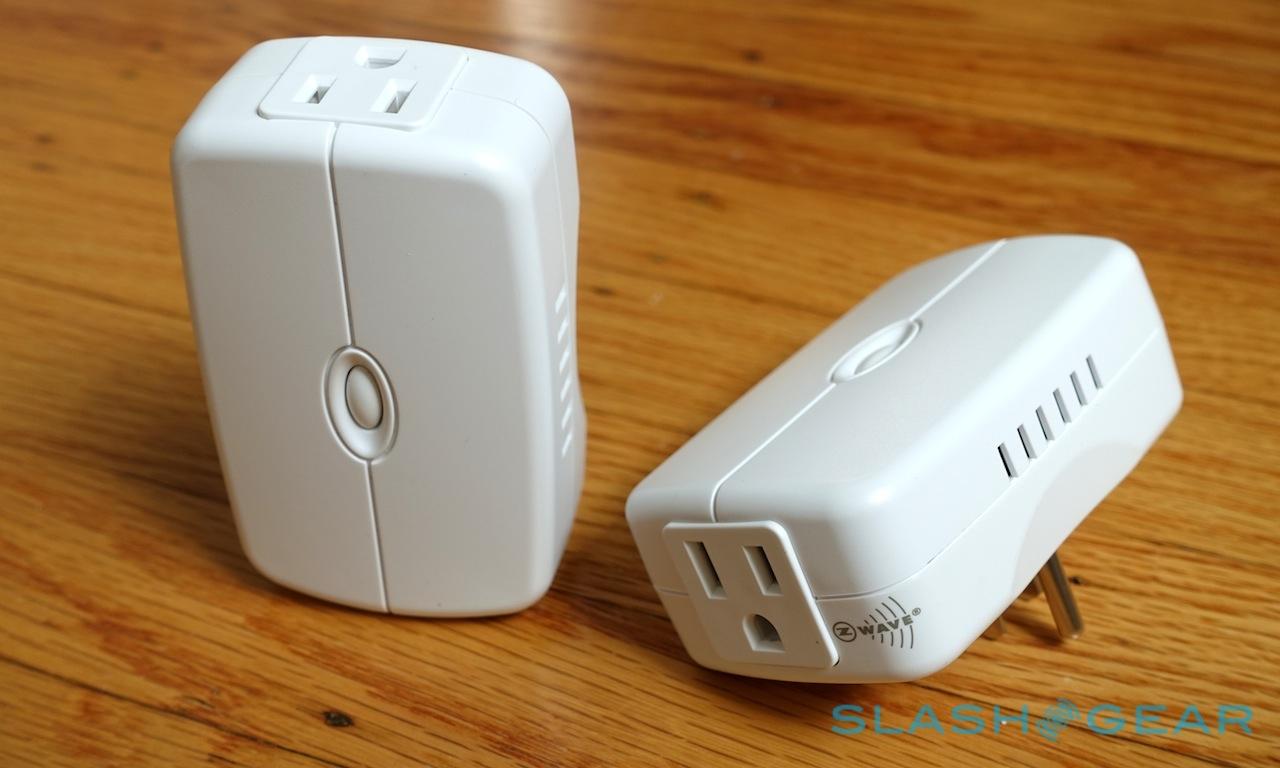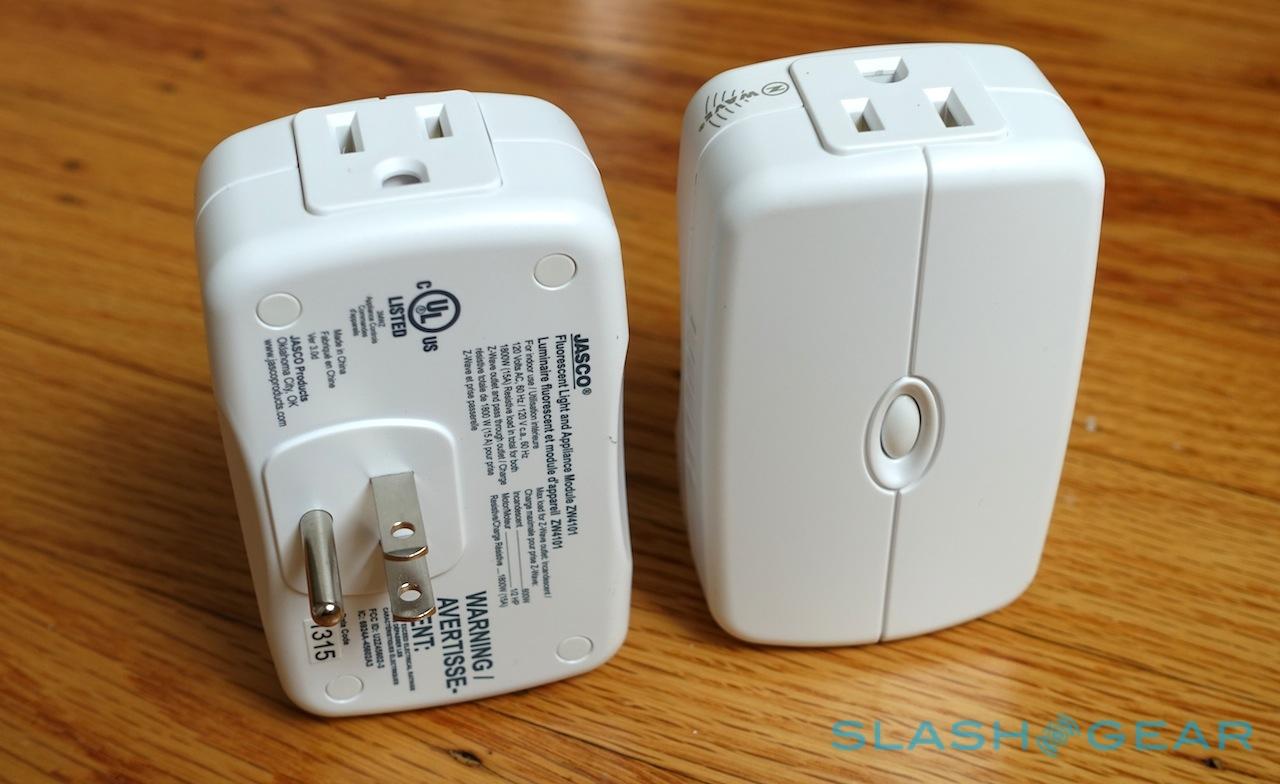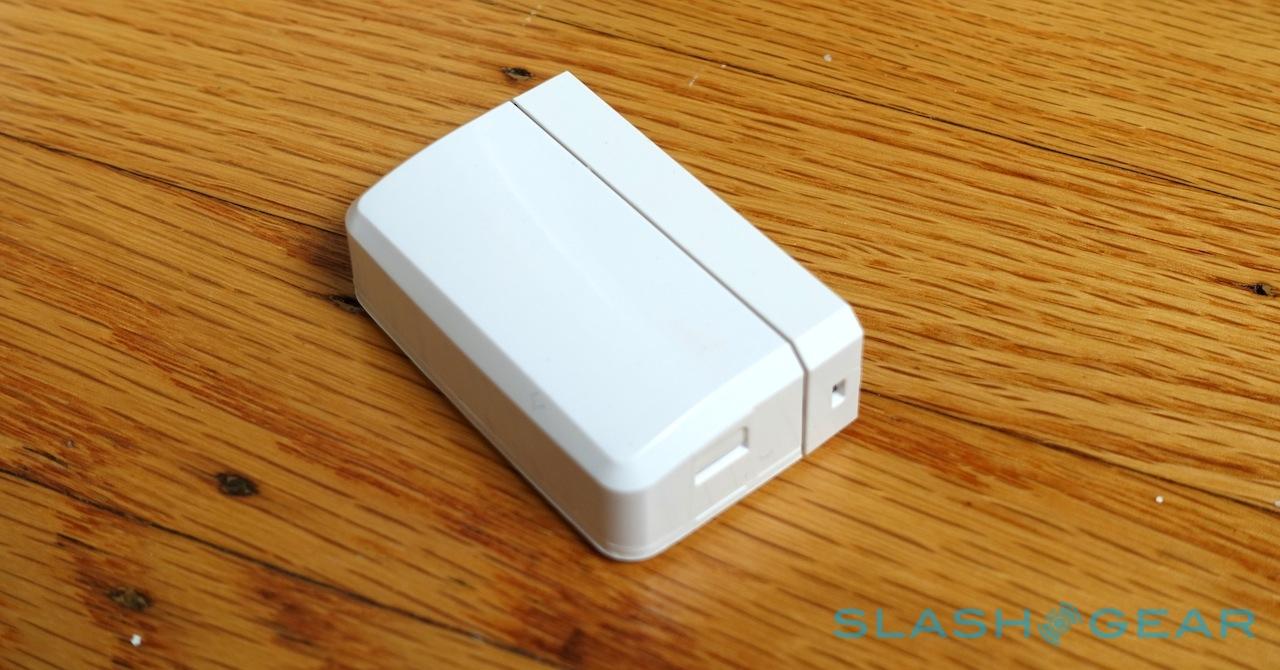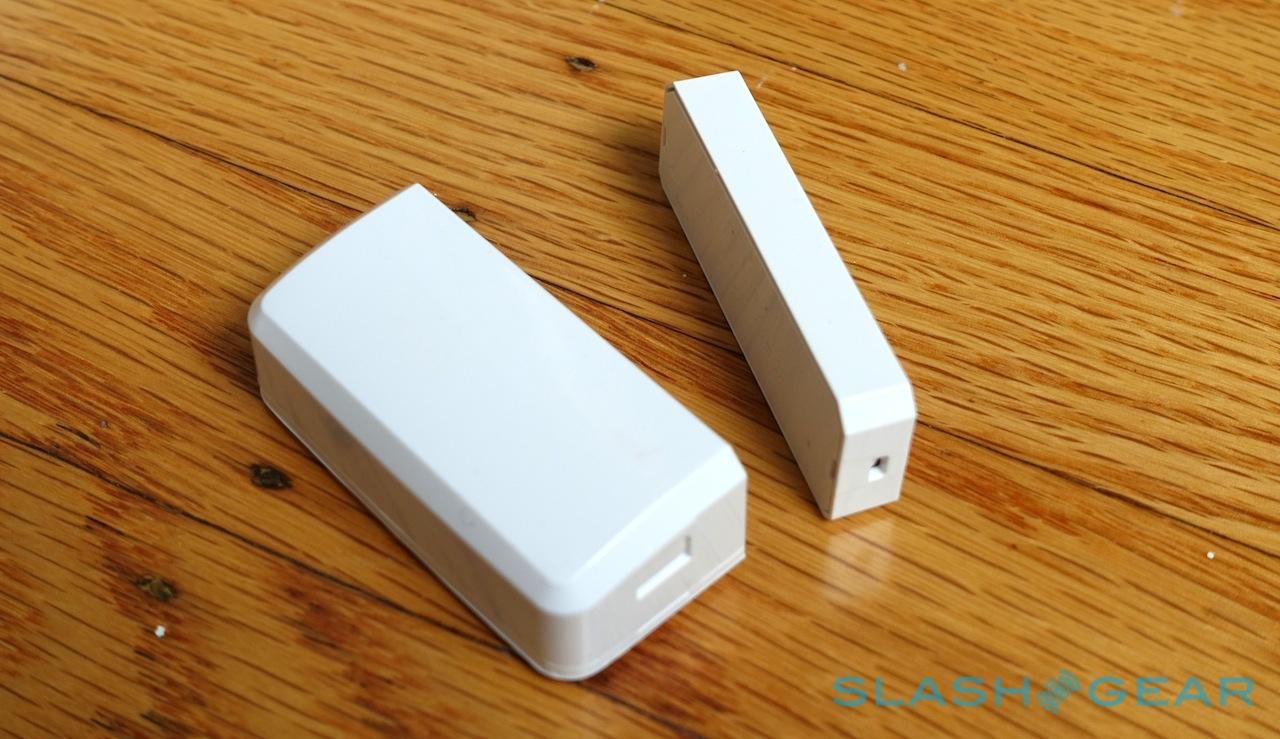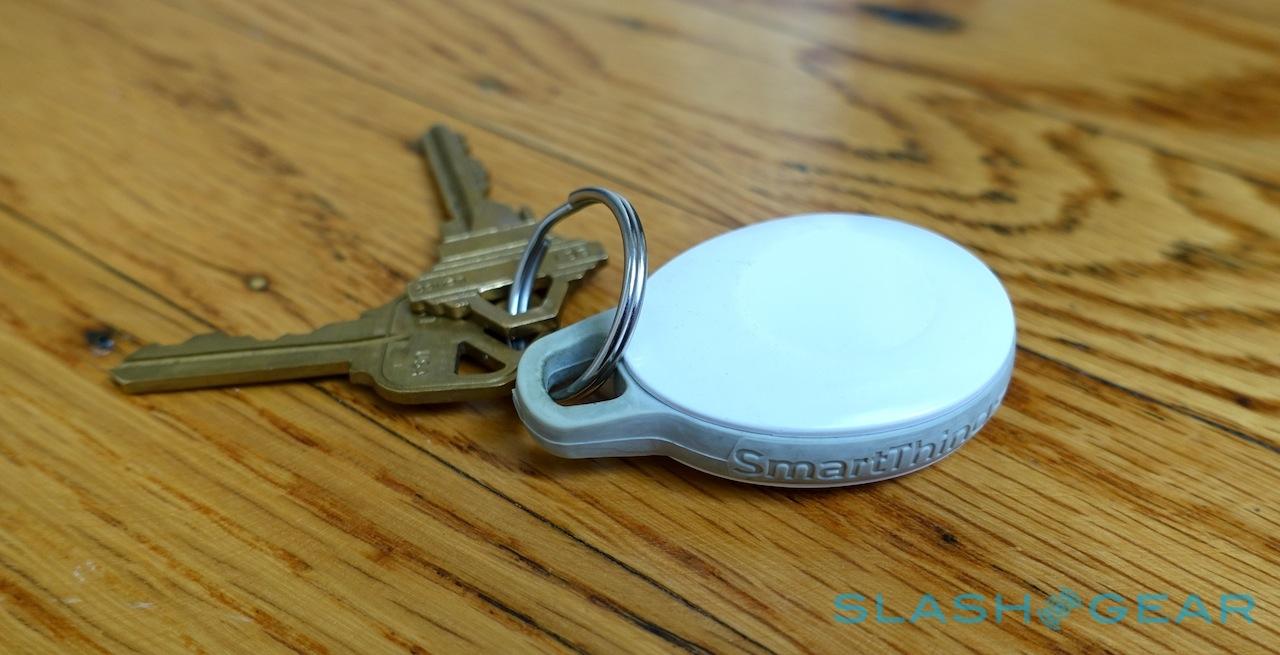SmartThings Review: Living In The Smart Home
Prepare to hear a lot more about SmartThings. Kickstarter success turned Samsung acquisition, the smart home startup isn't the only DIY approach to home automation and security out there, but it may well end up being one of the best funded. SmartThings' mantra is one of openness, aiming to work with as many third-party components as possible rather than lock users into a closed platform. Admirable, but it could easily add up to confusion; I've been living the SmartThings life for the past six months to see whether it works.
We've come a long way in home automation. What once was solely the preserve of the rich, demanding expensive installation or – if foresight had been lacking during construction – even more expensive retrofitting, has transitioned to a new age of plug & play components, cross-platform connectivity, and the sort of DIY-friendliness that makes setting it up yourself straightforward.
That's a marked difference from the attempts at consumer smart home tech that came in-between. X10 and other platforms were flexible but complex, and more frustratingly for everyday use they were often ugly in a bland, beige, unstyled way. All that changed with the advent of the smartphone.
SmartThings Hub
SmartThings' approach – like others we've seen in recent months, such as Revolv – has been to eschew clunky controllers and complicated dip-switches for setup, and instead turn the smartphone into a remote control. The company's app handles not only installation but ongoing interaction, whether you're home or away.
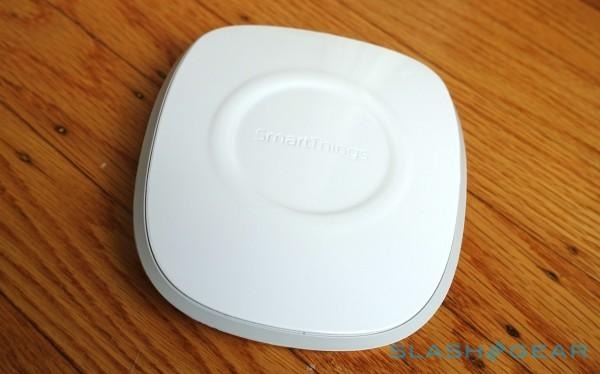
The $99 hub itself is a small block of glossy white plastic, powered by a wall-wart AC adapter, and hooking up to your router with a supplied ethernet cable. Inside, there's most conspicuously ZigBee and Z-Wave radios; WiFi is handled by your home router. Absent are Insteon and Bluetooth.
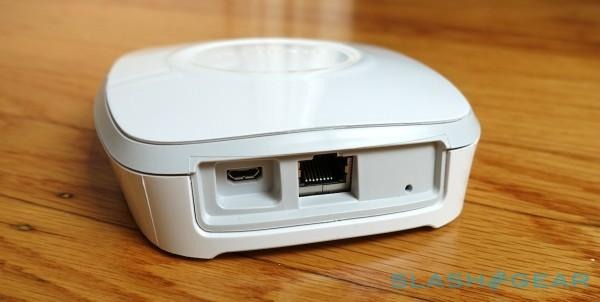
From that central beginning it's a case of adding your choice of peripherals, with SmartThings offering a range of its own as well as compatibility with a growing number of third-party devices. The easiest way to get going is with one of the company's starter kits, which includes the hub and a few bundled components.
SmartThings Components
There are five main pieces to the SmartThings range. The Multi Sensor looks the most straightforward, a battery-powered door or window sensor that's stuck in place with self-adhesive strips and triggered when the two parts are separated. However, inside it also has an accelerometer for reporting physical movement, and a thermometer for tracking temperature.
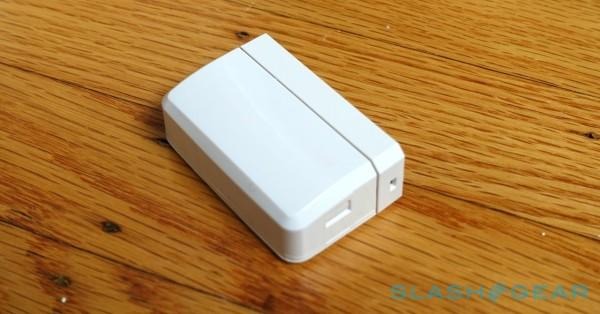
It's relatively easy to find a place for it to sit, even if the two halves are slightly offset as was the case with my misaligned front door. SmartThings doesn't specifically recommend it, but I found the Multi also worked as a freezer temperature monitor, capable of giving me an alert when the temperature rose after the door had been left ajar.
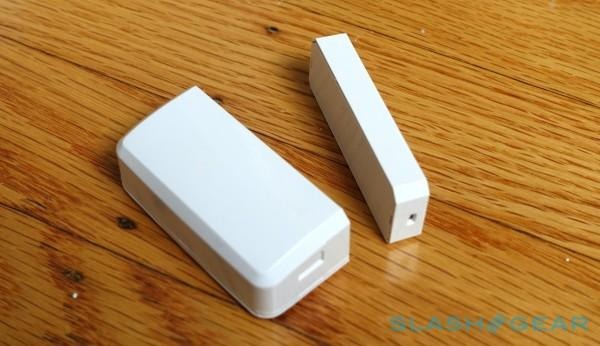
SmartSense Presence is a chunky white plastic fob which, thanks to a rubber loop, can be attached to your keys. It works as a notifier, telling the hub when you move in and out of wireless range, but you could just as easily attach it to a bag or a baby stroller, or leave it in the glove compartment of your car, and get alerts to their presence too.
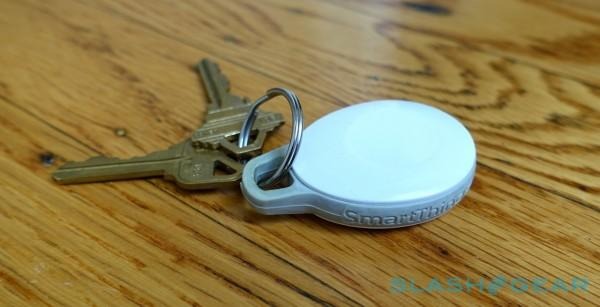
Unfortunately, it's a one way thing: there's no button or switch on the fob to trigger anything manually, so you can't also use it as a panic button, for instance. It's worth noting that the SmartThings app also reports presence, optionally, so even if you're not carrying a Presence fob you can get the same results.
The Motion sensor can run off an internal battery or with any microUSB power supply; the latter not only frees it of the possibility of running out of charge, but switches it into a ZigBee repeater, extending the range of your home automation network.
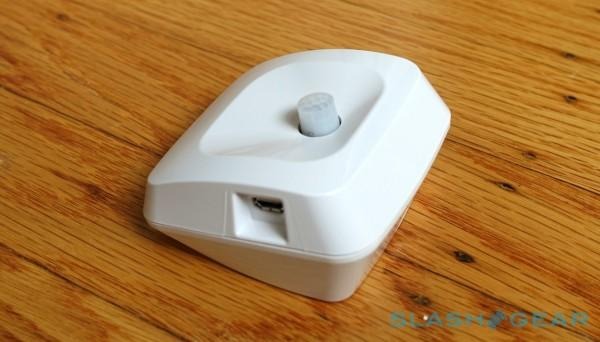
It you have the scope to plug it in, that makes sense; the first set of batteries I tried turned out to be near-duds, leaving the sensor to perpetually report movement rather than resetting after a period of quiet. Replacing the batteries requires unscrewing the casing, too, rather than just pulling off a panel.
SmartThings' Moisture Sensor is about the size of a couple of matchboxes stacked up, and promises to report spills from under the sink or from your washing machine. Two contacts on the bottom – little more than close-placed metal nubs – are bridged when the sensor is sitting in water, at which point it squeals its warning to the hub.
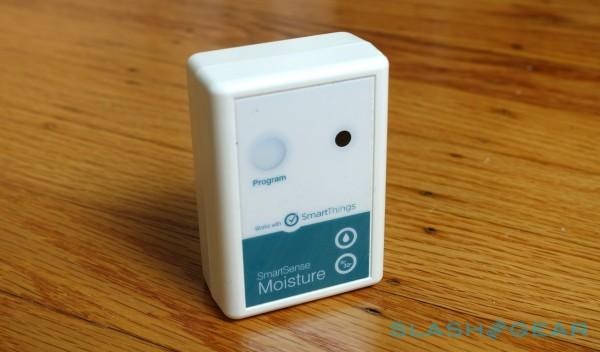
Unfortunately, while the battery-powered box is fairly compact, the integrated sensors can make placement tricky. If you want to put it behind the washer, for instance, you'll have to make sure there's enough space there for it to sit flat on the floor. I'd have preferred to see at least the option to plug in a more flexible probe on a wire, which would've allowed me to snake the cable behind appliances rather than wait for any leaks to make their way out to the front.
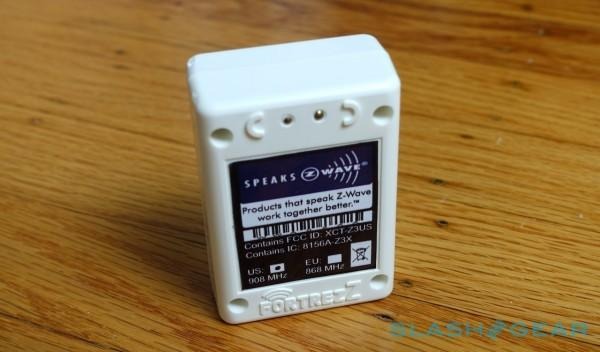
The last homegrown part is the SmartPower Outlet appliance module, which is the main output for the SmartThings system. Plugged in-between a regular AC socket and an appliance like a lamp, coffee brewer, or fan, you can remotely turn it on or off; there's also a useful button on the module itself for local control, and the actual power status is reported rather than just whatever the app remembers being used for last (a common criticism of some X10 systems).
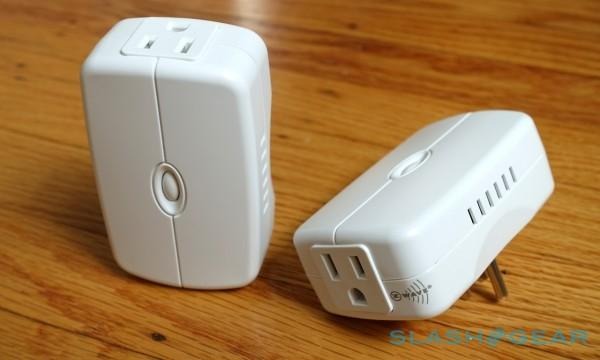
It's certainly sufficient if you have a desk lamp you want to operate from afar, but the effectiveness depends on the complexity of what you have plugged in. Any appliance that requires its own controls be operated when its power is connected is a no-go: if your coffee machine has a "start brewing" button then you're out of luck, since the Outlet module can only supply or cut off power to it, not reach out and touch it. Similarly, you can plug in a crockpot but you can't control its temperature settings.
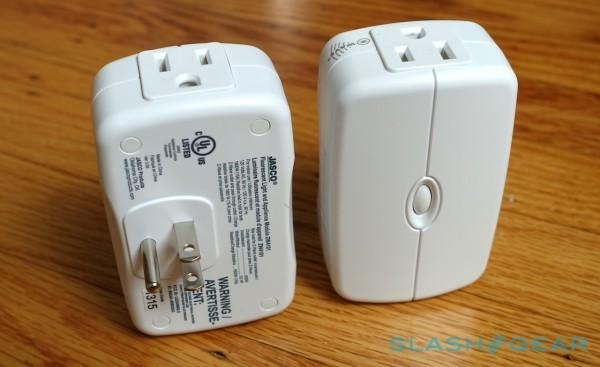
SmartThings App
If the hub is the heart of the SmartThings universe, the app is the brain. A free download for iPhone and Android – there's no tablet-specific version yet, though the iOS app will work in magnified mode on the iPad, and neither is there a Windows Phone version – you can have it installed on as many devices as you want, so that the whole family's phones can be turned into remotes.
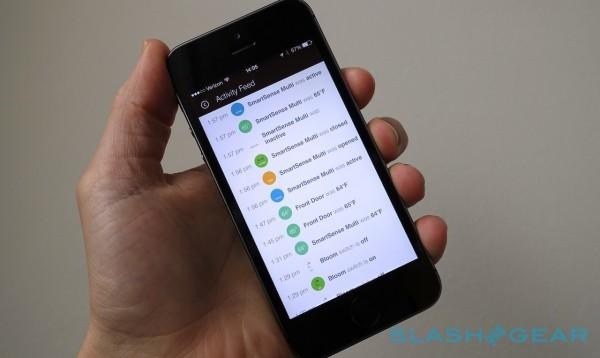
The main screen is the Dashboard, which is split into different categories like "Home & Family", "Doors & Locks", "Lights & Switches", and "Damage & Danger". Each contains tiles for the relevant component: so, in "Home & Family" you see which of the Presence fobs are at home, while in "Lights & Switches" you get icons for whatever hue bulbs, Power Outlets, or other switches are present as well as their current status.
Tapping a tile toggles the component it represents on or off. Swipe across, and you see a snapshot of all the current components and their status; swipe again, and there's a timeline of their recent behaviors.
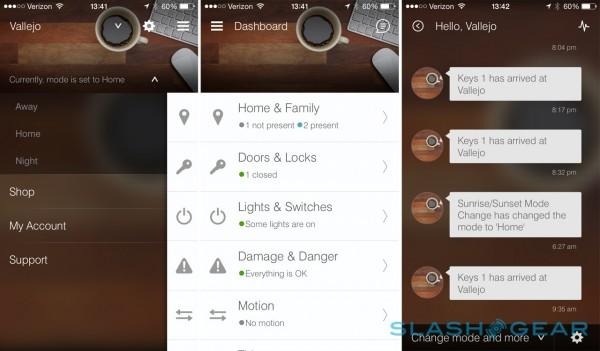
Further down the Dashboard, there are entries for the different actions SmartThings has set up. Under "Convenience", for instance, I have a macro which automatically turns on certain hue lights if the front door is opened at night. That action is pieced together from an existing preset: SmartThings covers the basics, like turning lights on at certain times, or off when everybody leaves the house, but you can modify them and rename them to suit more complex situations.
Alerts can be triggered at a variety of levels, depending on how visible you want them to be. At the most basic, each event shows up in the Activity Feed: a timeline of every status change. Optionally, you can have a push-notification on your phone. So, when the system automatically ticks over from Day to Night mode, based on the actual sunset time in my location, a message pops up on my phone to tell me its happened.
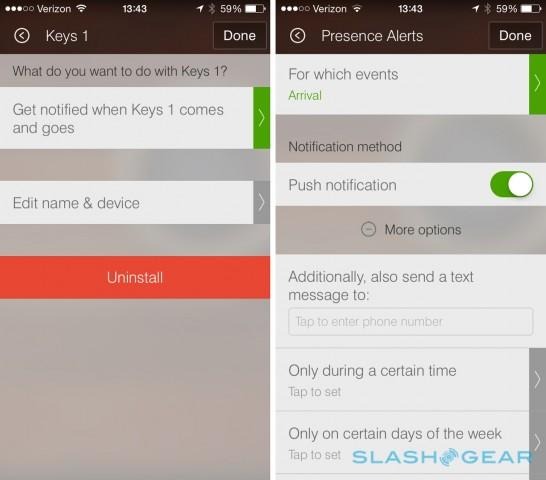
Significant events can trigger text messages. When my washer began leaking, for instance, SmartThings fired out an SMS to me that warned me I'd probably want to take a look at the issue. Alerts can be limited to only occur at certain times or on particular days: you might not want a text message if your kids' car was out during the day, but you might be interested if they left after 10pm on a school night.
Actions can be modified depending on the Mode the SmartThings system is currently set to. By default there are four – "Good Morning!", "Good Night"!, "Goodbye!", and "I'm Back!" – which effectively work as master triggers to one or more actions. Set the system to "Good Night!", for instance, and you could have all the lights turned off, the doors locked, and the motion sensors linked to a siren, all in one fell swoop.
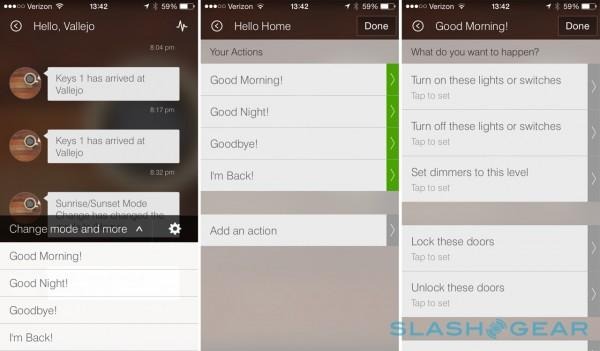
You can trigger them manually, or you can leave SmartThings to its own devices and use proximity and time to handle it. The system uses geofencing, figuring out who's home and who's away by the Presence fobs and phones nearby. In a fairly dense San Francisco neighborhood I found it would recognize me as being "home" when I got within 20-30 feet of my front door.
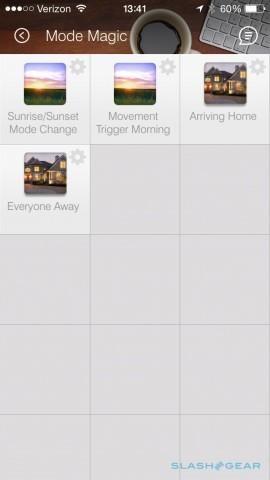
The app has been refined over the past six months I've been living with SmartThings. An early complaint was that there were too many different views which seemed to do the same time; that's been paired down to just the Dashboard, now. Sometimes, too, the names or original intentions of each action wasn't fully clear, though they're now somewhat better organized.
Room for improvement remains, however. There's no support for user accounts: if you have a house guest you want to give control over the lights and your Sonos speakers to, for instance, they'll also have access to your security features and the full settings. SmartThings says it's working on more granular controls.
I've also found troubleshooting can be difficult. Sometimes, the combination of different actions, modes, and other settings meant that the system behaved differently to what I had expected and intended, but there's no easy way to see what's screwing things up. Being able to tap a component and see exactly what is controlling it would go a long way to addressing that.
Broader Ecosystem
On its own, SmartThings could arguably be considered a fancier X10 with a more user-friendly interface. What makes it special is how it plays with a broader ecosystem of devices, which can be not only controlled from the SmartThings app but integrated into its macro recipes.
The compatibility list is growing, but already I've been able to pair my Philips hue color-changing bulbs, Sonos speakers, and Belkin WeMo motion sensor and appliance module with the SmartThings hub.
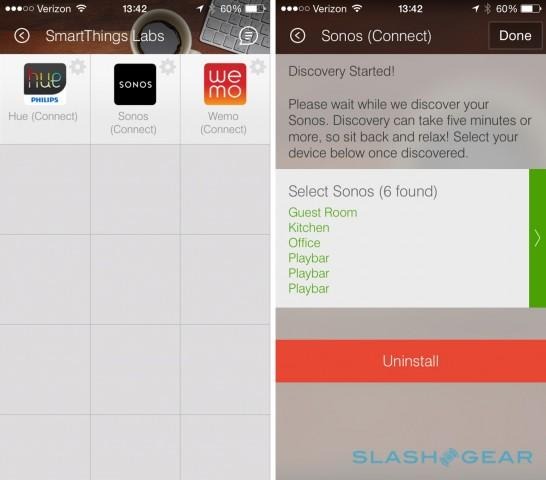
Each shows up as just another tile in the app UI, with the contextual controls varying depending on the native functionality of each. So, hue bulbs show brightness and color status, while Sonos speakers get play/pause controls, track skip, and the name of the song currently playing in that zone. Belkin's sensor and switch work just like their SmartThings counterparts.
The list needn't end there, though. There's support for motorized locks from Yale, Schlage, Kwikset, and others, as well as smart thermostats from Honeywell and RCS (no Nest at this stage, however); SmartThings recently added Dropcam camera support, too, allowing the wireless webcam to trigger and be triggered by other components, as well as deliver photos to the app either by schedule or on-demand.
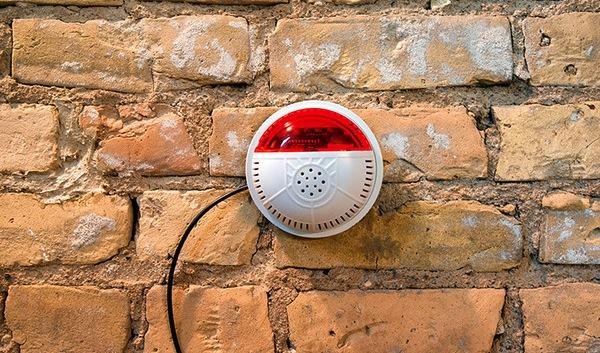
Depending on how much liberty you have to change out things like wall outlets and light switches, you can significantly reduce how noticeable the SmartThings system is to the casual glance. Various third-party outlets and switches can be swapped in for their dumb counterparts and hooked up to the hub; there are also smoke and carbon monoxide sensors, and at least one siren and strobe for turning SmartThings into a more traditional alarm system.
Given I rent, and so wanted minimal physical changes, it's great that with the exception of the adhesive Multi sensor, everything else can be mounted non-permanently.
Then there's the potential of IFTTT. "If This Then That" opens the door to exponentially increasing the number of devices and services SmartThings can hook into, with the web platform acting as the cross-translating glue which links them all together.
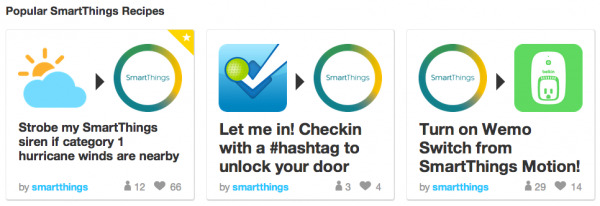
So, I was able to set up a Google Docs spreadsheet that was automatically updated with the times when the front door was opened, for instance, and a trigger that fired off a text message when the temperature dipped below a certain point. You could just as easily have a IFTTT call a preset number if an elderly relative or child carrying a keyfob wandered out unexpectedly, or have your lights turned on automatically when you get a certain email in your Gmail inbox.
If SmartThings and IFTTT don't have it covered, there's also a community of owners making their own recipes and adding their own custom features, which can be integrated into your own system through the SmartThings Labs section.
Nonetheless, there are some lingering gaps which I'd like to see filled. Top of the list is the absence of a switch for those times you don't want to have to pull out your phone to simply turn on the lights. The tiny eight-button keypad I used for easy shortcuts with Revolv wouldn't work with SmartThings, because of the absence of Insteon support, and I missed how readily it addressed the spousal approval factor from those who hadn't quite bought into the smart home concept as much as we ourselves had. Support for Philips' Hue Tap switch can't come soon enough.
Update: SmartThings is compatible with an eight-button Aeon Labs Z-Wave remote, priced at $60, and each key of which can be programmed to trigger a different event.
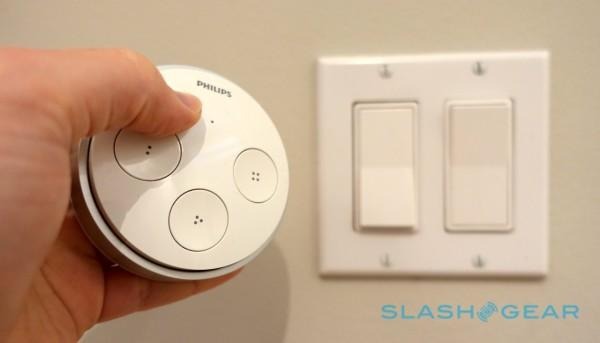
The Future
SmartThings had big ambitions, even before Samsung's involvement. The combination of the company's own roadmap for devices and services, and a user community that has been cooking up its own additions, means official or unofficial support has been growing steadily.
Plenty of gaps remain, however. Non-geek friendly controls are an obvious omission, as is a tablet app. Some sort of desktop or browser-based interface would make sense, too, certainly if you're trying to set up more complicated rules and macros.
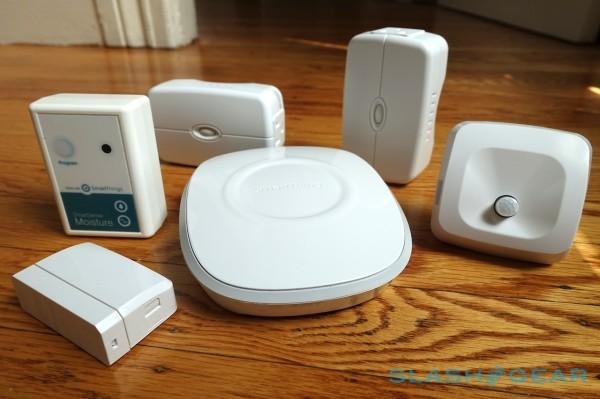
I'd also love to see voice integration. Siri, Google Now, and Cortana are each doing interesting things with contextual notifications and spoken commands, which have clear applications within the smart home. Reaching out with wet hands in the kitchen and swiping at your smartphone isn't necessarily the most ergonomic way to start a different Sonos playlist, for instance.
Update: SmartThings CEO Alex Hawkinson tells me that voice integration is "coming" to the system.
Then, of course, there's the competition. Apple's HomeKit system, set to launch as part of iOS 8, will take a similar approach to SmartThings in terms of third-party modularity. However, Apple's strength is likely to be in both making that straightforward for the user to get to grips with, and in branding every compatible component so that there's no confusion around what works with the system and what doesn't.
Wrap-Up
The approachable smart home is still young. There's plenty of lip-service paid to the Internet of Things, where everything from bulbs to fridge to pet bowl has a wireless radio built in, but while that should exponentially increase the amount of intercommunication, we still don't know what language they'll be speaking.
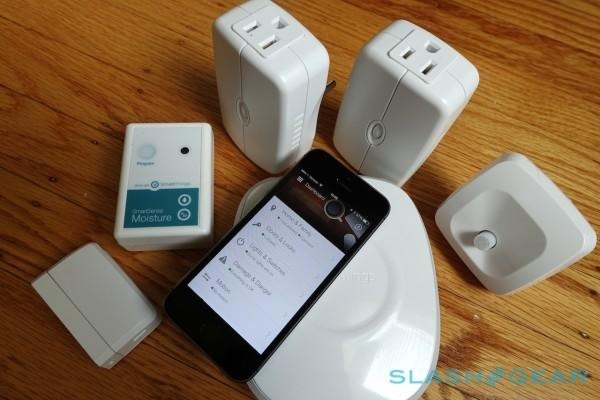
With mutually agreed standards still some way out, this piecing together of components will always require more research than the average consumer may want to do. Pre-selected kits are a good starting point, but the headache returns as soon as you decide to expand on them.
If Samsung's acquisition of SmartThings achieves anything, my hope is that it clarifies that uncertainty. That's certainly what Apple's approach with HomeKit looks set to do, but SmartThings' cross-platform support and community flexibility may well give it an edge. Right now its capabilities are certainly broad, but it still needs a final push to deliver the user-friendliness and hand-holding that mass market consumers require.

